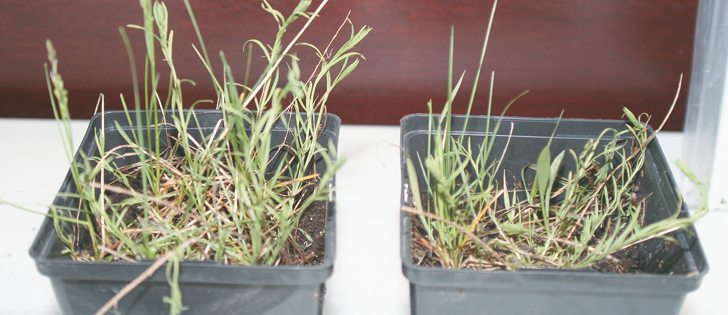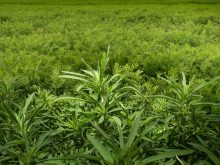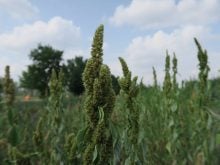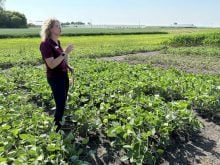Hemiparasite | Thousands of thesium plants found south of Calgary
INDUS, Alta. — No one is sure where the thesium plant came from, but it’s infesting a provincial park in Calgary.
The new invader is found in China and parts of Europe, where it is a relatively small plant, but conditions here encourage it to grow vigourously, producing hundreds of seeds until frost.
It’s a concern because its fine roots feed off the nutrients in other plant roots.
“It is a hemiparasite and that could be an agricultural problem. It seems to favour grass species, which could be a problem because a lot of our major crops are grasses,” said biologist Mary Ann McLean of St. Mary’s University College in Calgary.
Read Also

Agritechnica Day 2: The future of tractor power, building quicker crop apps and large farms and tech
Agritechnica Day 2: The future of tractor power, building quicker crop apps with Syngenta and large farms and tech
Hemiparasitic plants get some nutrition from their hosts, but also can photosynthesize. It also seems to like spruce trees and buckbrush, but so far McLean’s observations show no serious harm to those species.
More than 3,500 plants have been found in Fish Creek Provincial Park in south Calgary and it seems to have spread to adjacent areas. It has also been found in Montana and Idaho. McLean suspects it may have been carried with traffic since a major highway passes through that part of the city.
Thesium is a large multiple-stemmed plant with a small root system and appears to be quite hardy. During the June 2013 floods, it was buried under about 20 mm of sediment but still emerged in July and produced viable seeds.
“Floods could easily carry it downstream,” she said at a Rockyview County weed school June 4 in Indus.
Last year, her research team scouted the park to count weeds and experiment with controls. Three different herbicides were used with poor results. Pulling seemed to be the best way to remove it.
McLean also noticed ants carrying the seeds. Further research could investigate how closely thesium grows to ant hills and if the insects are spreading the plants.
















